The content of the article
Champignons are considered the most common types of mushrooms, so there is no need to advertise them additionally. The product is widely used in cooking, based on it are prepared first and second courses, canned snacks, salads. Due to the high protein content, champignons are an excellent source of protein. Experienced gardeners prefer to grow mushrooms on their own, but the procedure has several features. In order to fully comply with the technology, it is necessary to follow the step-by-step instructions.
What determines the yield
- The main factor affecting the yield, is the implementation of the correct microclimate, in which the ears begin to bear fruit. Also important is the timely watering, proper compost (correctly selected soil composition), opposition to external factors, diseases, pests.
- If you create optimal conditions, you can easily grow mushrooms all year round. First you need to choose a room that has a temperature range of 14-24 degrees. It is not necessary to take the original place, the main thing is the ability to maintain the temperature (the presence of a heater or, on the contrary, a split system). At the same time, the humidity of the air should not exceed 90% (the ideal option is a humidity of 80-85%).
- An equally important factor in ensuring proper yield is air circulation. Make sure that the selected place is carefully ventilated, it is important to ensure fresh air. Otherwise, the excess carbon dioxide released during the cultivation of champignons will result in a disproportionate leg (it will stretch unevenly).
- A positive feature of growing champignons at home is the complete lack of lighting. It does not matter, so the procedure can be carried out in the cellar, basement or in a covered shed, where the sun's rays do not penetrate. If desired, you can use shaded free corners located in the garage or greenhouse.As mentioned earlier, the main thing is to provide humidity and necessary temperature in the absence of light.
- Since the cultivation of champignons is produced in a humid environment, it is important to immediately prepare for the possible spread of bacteria. Pre-treat the selected room with a mixture of blue vitriol and lime, as well as formalin. Disinfection will kill existing microorganisms, so the likelihood of the spread of disease will fall to a minimum.
- If you plan to grow mushrooms in the summer or fall, consider the option of carrying out the procedure at the dacha. Pick up a dark place on the household field, select a separate bed, cover the ground. Cover the mycelium with roofing felt (can be replaced with polyethylene) to eliminate the possibility of drying or, on the contrary, excessive moisture. Such a simple course will provide a proper microclimate.
Stage number 1. Composting for champignons
- By compost is meant a special soil that needs to be prepared to get a full harvest of mushrooms. It is worth remembering that the soil is filled with organic compounds that play a major role in growing mushrooms, so you can not save on fertilizer.
- Composting is rightly considered to be the most time consuming process, and the final result depends on it. Mushrooms, in particular champignons, are highly dependent on the composition of the soil, for this reason it is necessary to respect the proportions. Correctly composed soil consists of one part of moistened straw and 4 parts of horse manure (the proportions of straw — manure are 1: 4).
- Spread the compost, alternating two components alternately. To achieve the maximum effect, line urea or superphosphate in small amounts between the rows. Mushrooms will grow faster if used specifically horse manure. However, in its absence, alternation of straw with chicken droppings or processed waste products of other animals is allowed.
- Lined compost for ripening champignons should receive air from all sides, for this reason it is not recommended to be laid on the ground. Ensure that the ground is covered with a canopy, do not allow direct ultraviolet radiation or abundant precipitation. Of course, the compost must be hydrated, however, excess water will prevent the fermentation.
- To produce high quality compost at the exit, prepare a burt for ripening. Its dimensions are approximately equal to 1.5 meters in width, 1.5 meters in length and 1.5 meters in height. This is the ratio that will ensure proper burning. Do not do compost in small quantities, because for full fermentation you need large volumes.
- If we talk about the place of compost preparation, try to carry out manipulations in the open air. As a result of fermentation of the substrate, ammonia and carbon dioxide are released. In cases where compost is prepared indoors, ensure a good flow of air and its ventilation.
- The duration of maturation of compost varies within 18-20 days. Knead and moisten the contents of the collar every 5-6 days to ensure proper burning. During the first kneading, add the ground lime to the compost. During the second procedure - superphosphate, then crushed gypsum or alabaster is poured.
- Compost is prepared by fermentation, so its temperature indicators sometimes reach 53-70 degrees. Upon completion of the combustion process, the indicator drops to a level of 21-25 degrees.The readiness of the compost can be judged by the smell, the ammonia stench disappears. The finished soil has a brownish tint, an elastic structure (when squeezed it returns to its original position). The composition should not stick to the hands, while the straw is easily torn and has a soft structure.
Stage number 2. Laying out the compost and the care of the mycelium
- After preparing the compost, you can start laying it. Pick up containers for growing mushrooms, spread the mass in such a way that its height does not exceed 22 cm. You can use wooden boxes, bags, racks or plastic containers as containers.
- If we talk about sowing material, it is called the mycelium. The composition is grown by laboratory, so make it yourself will not work. The product will have to buy. Mycelium can be compost and grain.
- The first type has a high storage time (about 10-12 months at a temperature of 0 degrees). You will need about 500 grams. compost mycelium per 1 square. m. of soil. Grain composition is more efficient, it gives the best yield. On 1 square. m. soil you need to add 330-350 gr.mycelium. In this case, the product retains its properties for six months, you can keep it in the refrigerator.
- To sow, lay out the required amount of mycelium in the compost (lift it with a layer), deepen the seed by 5 cm. The location of the holes represents a chessboard, each recess should be made at a distance of 25-30 cm from each other.
- If all the conditions are met (the temperature of the compost is about 20 degrees, the humidity of the air is about 80%), the mycelium will develop in 15-20 days. During the period of ascent of the sowing composition it is necessary to constantly moisten the soil and monitor the temperature regime of the substrate (the indicator should not rise above 40 degrees). Otherwise, the mycelium will die. To maintain moisture, make shelter with burlap or polyethylene.
- If you grow mushrooms in the summer cottage, the ability to regulate the temperature and humidity is absent. When lowering the indicators tightly cover the beds with ruberoid or film.
Stage number 3. Crop ripening
- As mentioned earlier, the mycelium grows after about 3 weeks.On the completion of the process, you will learn on the appeared web with a silvery shade, it will come to the surface of the soil. At this point, it is necessary to reduce the temperature to 13-16 degrees and sprinkle a web of 5 cm of the cover mix. The mixture consists of lime powder and peat, it causes an alkaline reaction.
- To ensure productive ripening of the crop, throughout the process, maintain the temperature within 13-16 degrees, the humidity should be about 85%, while not forgetting about good ventilation. Watering the soil is drip with the help of dispersing devices that ensure uniform spraying. Such a move will not condense the substrate, but will fully moisturize it.
- If the champignons grow in the dacha, protect the soil from direct ultraviolet radiation, and also do not allow waterlogging. Under the rays of the sun, the compost will dry out or become very hot. At the same time, heavy rains will compress the soil, resulting in a large load on the mycelium (its development will slow down or stop altogether).
Stage number 4. Harvesting
- You can harvest the first champignon harvest after 3-4 weeks.The covering peel will tell you about the readiness of the composition, it will begin to burst in the lower section of the mushroom cap. Champignons have a peculiarity to ripen in stages, the first harvest is the largest, then the wave subsides.
- To pick the mushrooms, twist them counterclockwise, then carefully remove them from the ground. After the fungus has been removed, sprinkle the resulting well with moist soil. Perform a rotational movement gently, otherwise you will damage the layer of mycelium and young ears of mushrooms.
- Collect all specimens, even those that are sick or have a small size. Such a move will save the subsequent harvest from pests, as a result of which fruit bodies will begin to develop many times faster.
- Throughout the entire fruiting stage, spray the room with potassium permanganate diluted before the appearance of a raspberry shade. You can also use lime as you wish. Such a move will not allow pathogens to grow in wet conditions.
- If we talk about the number from 1 square. m. you collect about 6-13 kg. champignons. For 2-3 months, the mycelium will bear fruit about 7 times, after which the yield will fall sharply.It is forbidden to reuse the compost, they can fertilize the garden and garden.
Prepare compost for mushroom cultivation, purchase mycelium. Maintain the required temperature and soil moisture, harvest in stages. Do not use waste composition a second time. After harvesting, sanitize mushroom containers and the room in which they were grown.
Video: mushroom cultivation at home

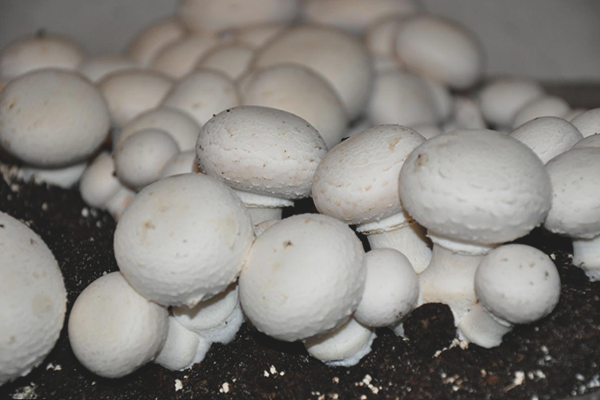

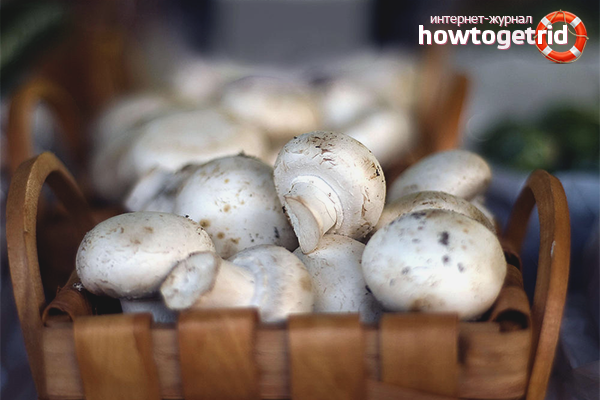

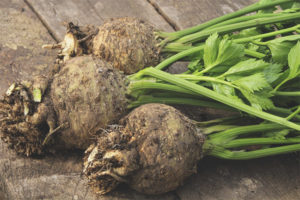
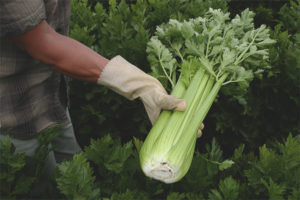

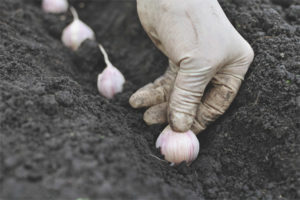
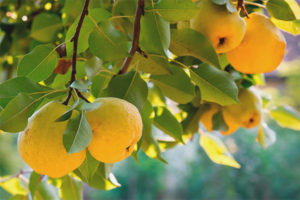
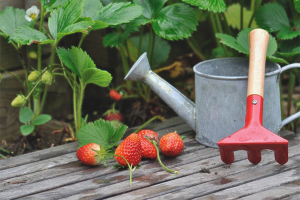

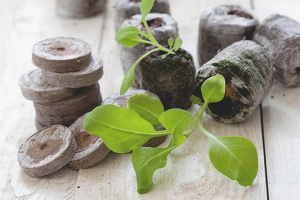
To send